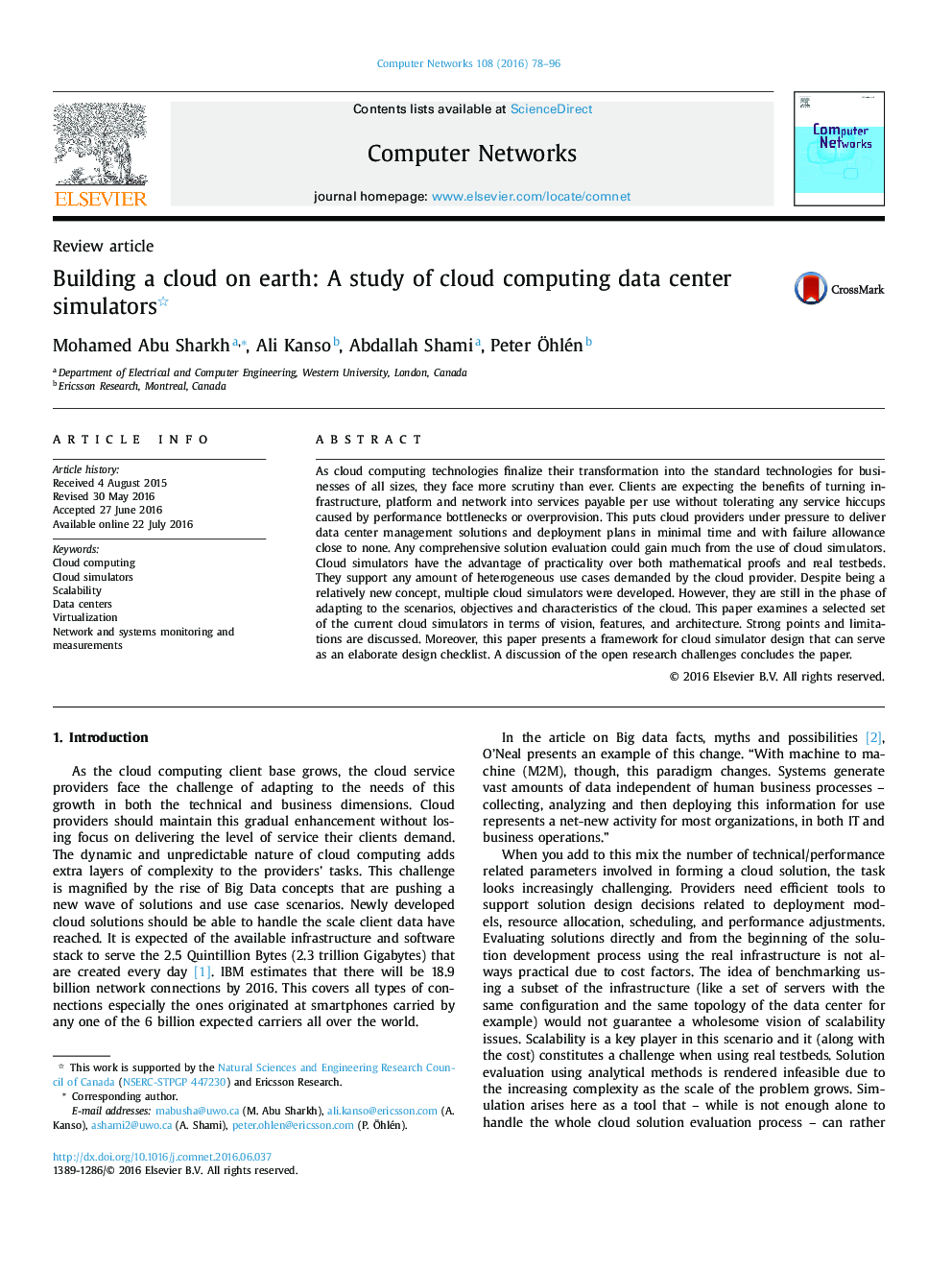| Article ID | Journal | Published Year | Pages | File Type |
|---|---|---|---|---|
| 450640 | Computer Networks | 2016 | 19 Pages |
As cloud computing technologies finalize their transformation into the standard technologies for businesses of all sizes, they face more scrutiny than ever. Clients are expecting the benefits of turning infrastructure, platform and network into services payable per use without tolerating any service hiccups caused by performance bottlenecks or overprovision. This puts cloud providers under pressure to deliver data center management solutions and deployment plans in minimal time and with failure allowance close to none. Any comprehensive solution evaluation could gain much from the use of cloud simulators. Cloud simulators have the advantage of practicality over both mathematical proofs and real testbeds. They support any amount of heterogeneous use cases demanded by the cloud provider. Despite being a relatively new concept, multiple cloud simulators were developed. However, they are still in the phase of adapting to the scenarios, objectives and characteristics of the cloud. This paper examines a selected set of the current cloud simulators in terms of vision, features, and architecture. Strong points and limitations are discussed. Moreover, this paper presents a framework for cloud simulator design that can serve as an elaborate design checklist. A discussion of the open research challenges concludes the paper.
